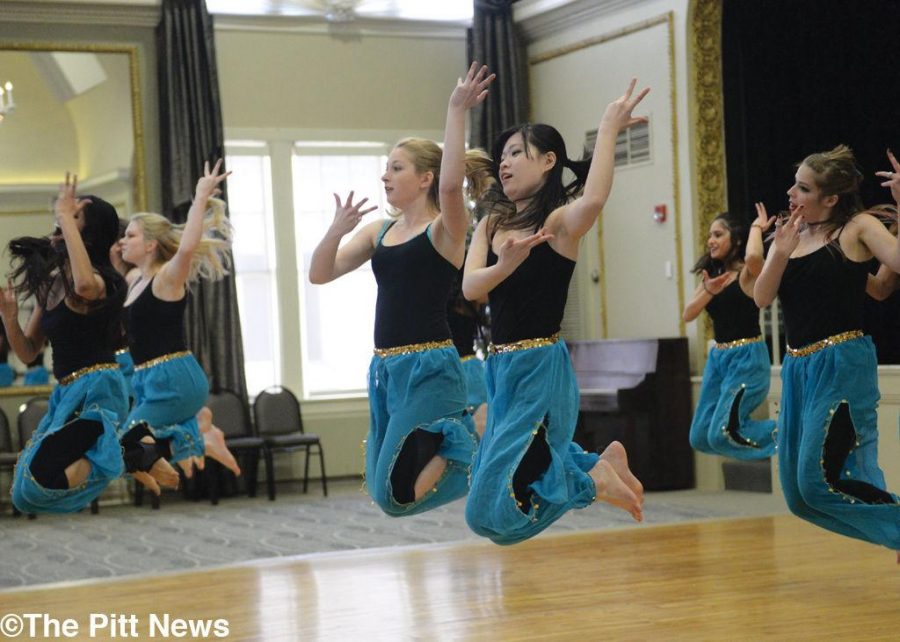Asian cultural fair spreads diversity
April 5, 2015
For Shuqi Xiao and other members of the Asian Student Alliance, the term “Asian” refers to many cultures — not just one.
“When people hear Asian, they usually think Chinese,” Xiao, vice president of the Asian Student Alliance said.
To help clear up the stereotype and educate the Pitt community about Asian diversity, the Asian Student Alliance hosted its annual cultural fair on Sunday from 4 to 6 p.m. in the O’Hara Student Center ballroom. About 100 students from different backgrounds attended the event, which featured performances and cuisine from seven cultural organizations on campus.
After the different groups put on a show where they sang, danced and acted, the attendees moved to the first floor of the O’Hara Student Center for traditional food and games.
The Southeast Asian Student Alliance taught students how to play Congkak, a game similar to Mancala, a two-person game where players move stones from one side of a rectangular board to another, trying to get as many as they can into his or her end. The Chinese American Student Association served sweet and sour chicken with rice and offered lessons on how to write words such as “love” and “peace” in Chinese characters.
Xiao, a junior studying biology and finance, said the event served as an opportunity to educate the University community about different Asian cultures.
Zisha, Pitt’s student fusion dance troupe, combined the native dancing styles of the groups to show the differences in each group’s cultural dances.
The troupe’s set included a mix of Britney Spears’ “Toxic” with traditional Asian music, during which they performed a seamless melange of Bollywood and body rolls. Zisha’s 10 female dancers, dressed in black tank tops and electric blue pants with gold accents, came from different backgrounds and ethnicities.
Zisha attends cultural events not only to see other ethnic traditions, but to show dancing styles different from their own, Sri Karanam, captain of the dance troupe, said.
“I grew up in a dominantly white community,” Karanam, a junior studying biology, said. “So, this is like my way of traveling.”
Along with the dance performances, the groups also represented their different cultures with live music.
Sophomore neuroscience major Asim Viqar, a member of the Pakistani Student Association, beatboxed while his friend, Will Dang, a sophomore majoring in biology and a member of the Vietnamese Student Association, sang a medley of old pop hits and played guitar.
Viqar said, although there was nothing truly cultural about their performance, it was interesting to have two students from different Asian organizations collaborate.
“Events like this are important to educate about diversity,” Viqar said.
Alyssa Miranda, a freshman studying nursing, also enjoyed the exposure to other ethnicities.
“I saw traditional dancing that I recognized,” Miranda, Filipino by heritage, said. “But also, [I saw] performances and stories that taught me about other cultures.”
Viqar said the performances did more than just entertain audiences.
“These events don’t just help spread awareness, but show how each ethnic group on campus works together,” Viqar said.



